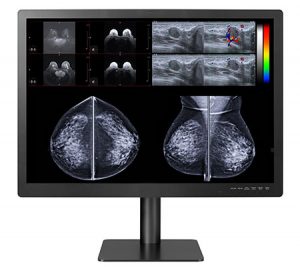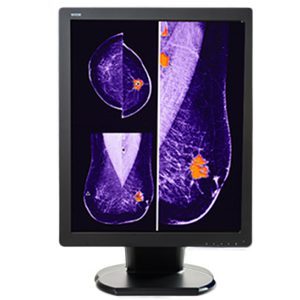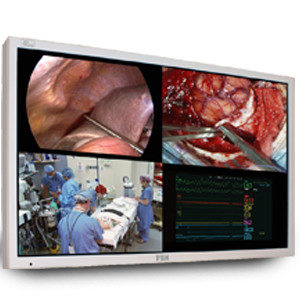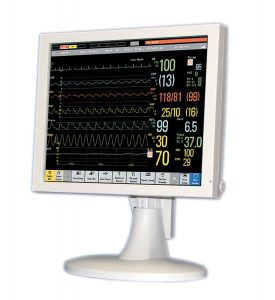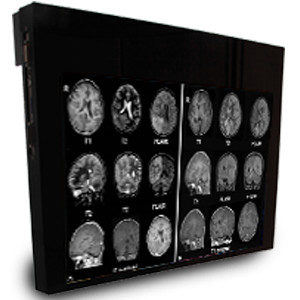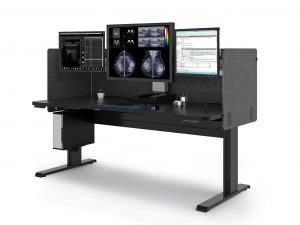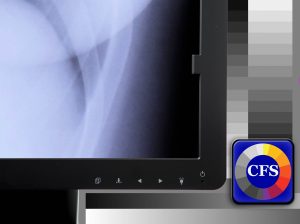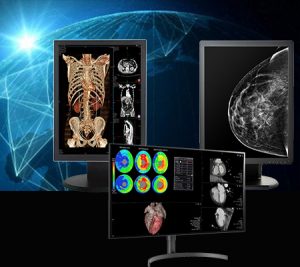
Since the widespread emergence of COVID-19 in North America in early 2020, remote radiology reading from home (also known as teleradiology) has seen a surge in popularity. Teleradiology refers to radiologists receiving images to interpret from a facility in a different geographical location than where the radiologist performs the reading. This may be in a country in a different time zone halfway around the world or in the radiologist’s home located just blocks from the hospital they are contracted with.
What’s the incentive to shift to remote radiology reading?
Social distancing requirements to help stop the spread of the virus during the pandemic has required a radical shift in how radiology is practiced in hospitals and healthcare centers.
Mohammed Imran Quraishi, MD, assistant professor of radiology at the University of Tennessee, and colleagues surveyed 290 geographically diverse institutions to determine how many sites were transitioning to teleradiology as a result of the pandemic. They received 174 responses and found a significant number of sites had radiologists installing workstations at home (65.2%) and a sizable movement to internal teleradiology (73.6%) to replace daytime shifts.
Beyond the safety related reasons for shifting to more remote radiology reading, performing radiology from home offers increasingly strong personal and economic incentives for physicians as well.
Jackson notes “When teleradiology first entered the industry as a career option, it was pigeon-holed into being an overnight service only. Radiology practices used teleradiology as a way to avoid overnight call. However, in recent years, reading images remotely has ballooned as a viable career option for radiologists who simply don’t want to work in hospitals or imaging centers.”
And if the increased flexibility of performing radiology from home is not enough to convince radiologists to consider working more at home both during and after the pandemic, the economic trends in the sector might be.
In February 2020, Grand View Research, an India & U.S. based market research and consulting company, reported the size of the global teleradiology market is expected to hit $10.9 billion USD by 2027. Growth in this sector is expected to be driven by a shortage of radiologists paired with an increased demand for imaging procedures.
The fastest growth is expected to occur in CT. This is due to quicker testing, widespread use, high-resolution image quality and the arrival of newer 4D generation systems.
In 2019, x-ray had the largest share of the teleradiology market due to its broad scope of application from identifying bone fractures to dental injuries. Increased demand for core diagnostics and imaging at the bedside combined with new technologies is predicted to drive growth even more.
-
- •Flexible work
Michael Yuz, MD, an executive radiologist with USARAD, a radiology-on-demand company points out, “As the opportunities have expanded, so have the positives that come with the work.” However, he is quick to point out that while radiologists working from home can choose their days and hours of work, they will not end up working less. In fact, he says it’s not unusual for radiologists working from home to work twice as many hours as their colleagues practicing in hospitals or imaging centers and to routinely put in 12-14 hour workdays.
- •Flexible work
-
- •Better work-life balance
Being able to choose what days and hours one works and the ability to work at home allows teleradiologists to have more freedom to decide where they want to live. It also allows them to spend more time with family and friends. This results in radiologists who are happier with where they work and live and as a result, they experience less work-related stress according to Michael Rothman, MD, a teleradiologist based in Bethlehem, PA. Quraishi et al. confirmed this in their study stating 64.8% of respondents who transitioned to working from home during the pandemic reported decreased stress levels. And this occurred while 96% of respondents found an improvement or no change in turnaround times for readings. Michael P. Recht, MD, Professor and Chairman of NYU Langone Department of Radiology “said he is ‘very much’ in favor of remote reading and noted that about one-quarter of his faculty took part in this practice—thanks to a wellness initiative—prior to COVID-19.” He says almost 70% of his radiologist staff have taken part in the program during the pandemic with these physicians experiencing improved work-life balance due to the increased autonomy and flexibility in their work.
- •Better work-life balance
-
- •Ability to select a subspecialty
As Yuz explains, most imaging facilities expect their radiologists to function as generalists. However, teleradiologists working from home have the ability to choose and focus on a subspecialty. They may still be required to perform some generalist work but they can also work within their chosen specialty as well. And depending on where they live, teleradiologists may be able to go into local hospitals and perform readings for hospital radiologists who lack experience in a particular subspecialty.
- •Ability to select a subspecialty
-
- •Ability to select partners
Physicians who transition to remote radiology reading also have the opportunity to choose what hospitals and imaging centers they partner and work with. This means being able to work with smaller or larger centers (depending on preference) as well as radiology centers offering imaging to patients in specific subspecialties the radiologist may want to focus in.
- •Ability to select partners
-
- •Reduced dependence on external/contracted readings
In the research by Quraishi et al., they also found that as more radiologists transitioned to working from home during the pandemic, many radiology practices saw a corresponding drop in the need for external or contracted readings. This finding was common across the U.S. as a result of fewer non-essential cases and lower case volumes overall.
- •Reduced dependence on external/contracted readings
What will you need to make remote radiology reading successful?
While performing radiology from home has its benefits and can be a very rewarding way to work in the profession, it can also be extremely frustrating and next to impossible without the right equipment and support.
-
-
PACS equipment
Not surprisingly, having up-to-date technology that is suitable for imaging and patient information security according to the ACR–AAPM–SIIM Technical Standard For Electronic Practice of Medical Imaging guidelines is a must. Most home workstations will require at minimum multiple diagnostic quality monitors, a microphone or dictaphone for speech recognition, and a computer with PACS access that is secure. An ergonomically designed workstation is an important feature to consider as well to help reduce fatigue and repetitive strain injuries. Double Black Imaging has released teleradiology bundles that can be easily customized with CPUs and ergonomic workstations including seating. Our configuration team ensures that each workstation is preconfigured and labeled for ease of use at the end user site.
-
-
-
Fast internet connection
Sammer et al. found an internet connection of 80 Mbps over the hospital VPN provided radiologists working at home on PACS workstations with nearly the same results as working in-house but noted that speeds decreased during peak work hours when more people were working from home. Speed was also reduced if the internet connection was being used by someone else concurrently at home. They reported internet speeds as low as 30-40 Mbps were “acceptable” but this resulted in noticeable lag while speeds of 200+ Mbps allowed for a “seamless experience”.
-
-
-
HIPPA compliance
To practice teleradiology, radiologists working from home must ensure they are working on a secure network to protect patient information and privacy. One important way to protect patient information when working remotely is via two-factor authentication when signing onto PACS at home. While it may take an extra couple seconds to do this, it’s essential to ensure patient data is not compromised.
-
-
-
Integration of and access to patient information
Radiologists working from home must have access to patients’ electronic medical records (EMRs). This includes access to previous imaging exams and reports.
-
-
-
IT support and self-help instructions
Having the right workstation setup and internet is essential. But it’s just the start of what’s required for radiology reading from home. Technology is great—when it works. When it doesn’t, radiologists working from home need access to 24/7/365 IT support when problems arise. As Matthew Hayes, a PACS manager at Radiology Partners explains “Aside from the IT infrastructure challenges required for at-home PACS, organizations need to consider who is going to troubleshoot problems. What if a head CT for a stroke protocol is taking 15 minutes to load? The radiologist needs to talk with someone quickly via a helpdesk. Even simple fixes such as HDMI connections can be solved ahead of time with simple, easy-to-read PDF instructions” he said.
-
-
-
Licensing and legal support
For physicians performing radiology from home, Yuz and Rothman explain radiologists may be working with many different hospitals and imaging practices across the country and even internationally. This will require licenses in all the states and countries a physician works with as well as legal representation to ensure liability coverage.
-
The diagnostic imaging experts at Double Black Imaging can help you select a home workstation that suits your needs and budget during COVID-19 and beyond. Contact our radiology display experts today with your questions. We’re eager to help any way we can.
Source List:
https://collaborativeimaging.com/the-pros-and-cons-of-teleradiology/
https://www.healthimaging.com/topics/imaging-informatics/teleradiology-adoption-spiked-covid-19
https://www.ncbi.nlm.nih.gov/pmc/articles/PMC7245278/
https://www.diagnosticimaging.com/view/teleradiologist-experience
https://www.grandviewresearch.com/press-release/global-teleradiology-market
https://www.healthimaging.com/topics/imaging-informatics/remote-reading-radiologys-virtual-future
https://www.acr.org/-/media/ACR/Files/Practice-Parameters/Elec-Practice-MedImag.pdf
https://www.arrs.org/downloads/ajr/COVID-19-WFH.pdf
https://www.healthimaging.com/topics/conferences/remote-reading-here-stay-how-radiology-can-prepare-virtual-future
